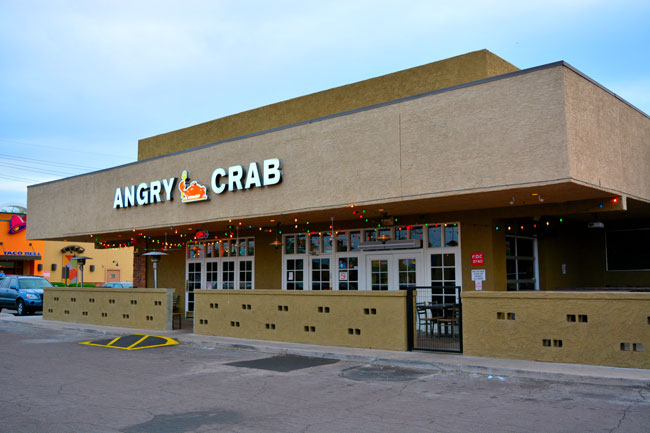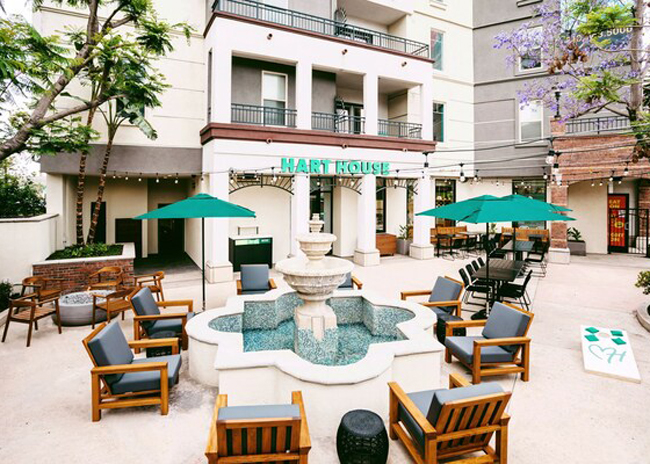Angry Crab Shack opened its first location in 2013 and now has 10 restaurants, all in second-generation restaurant spaces. And that’s the key to this brand’s growth. In fact, the company expects to open five more stores in the next year and has a five-year plan to open 100 stores by 2023, all in the Southwest, Midwest, and Southeast.
 Andrew Diamond, president of Angry Crab ShackAndrew Diamond, president of the Mesa, Ariz.-based company, explains the pros and cons of moving into a space that formerly housed a restaurant, as opposed to building from the ground up.
Andrew Diamond, president of Angry Crab ShackAndrew Diamond, president of the Mesa, Ariz.-based company, explains the pros and cons of moving into a space that formerly housed a restaurant, as opposed to building from the ground up.
How much more economical is it to open in a second-generation space?
AD: The median investment, which includes every dollar needed to open a location, is around $451,000. A brand-new buildout of a similar location might be as much as $1,000,000. Taking over second-generation real estate space can get you open faster, which leads to a quicker recoup of your investment.
What are some challenges you’ve come across in these spaces and how did you fix them?
AD: The first challenge is finding the location. If the square footage doesn’t meet your standards and there’s not more available space, you’ll have to pass, even if the location has ideal demographics for your concept.
Another challenge is keeping in mind the existing space was initially designed for another concept. You have to be able to adapt your concept to various floor plans and kitchen designs. The infrastructure and fixtures are already in place so you might not have the same setup as in your other restaurants. Angry Crab Shack has two kitchen designs; this allows us to adapt to the building.
Finally, make sure you thoroughly inspect the location. Ensure all building codes are up to date and that there are no issues with electrical, plumbing, or HVAC. Make sure you have all the information you need as you enter into lease negotiations and ask for more contribution from the landlord in the form of tenant improvement dollars or reduced rent.
Have you had some good surprises, in any spaces?
AD: At a few Angry Crab Shack locations, we were able to repurpose wood. We have used what was an existing stage/platform to build a fence, which is a common feature in our interior design and also used slats of wood from a railing to create the top of a bar.
What type of locations work best and why?
AD: If you can find a second-generation restaurant that’s an empty shell you have more freedom for your own design, but it will add to the cost of the buildout as you’ll have to purchase more fixtures, equipment and furniture. If you’re deciding between an empty shell and one that already has the fixtures and equipment in place, pick the location that best fits your demographics. Think about parking or looking for a dense population and ease of access to the space.
How do you find these locations?
AD: You should always be looking for real estate opportunities if expansion is part of your growth plans; the process does not start just when you decide you need a space.
Angry Crab is a family-friendly restaurant. We look for schools, places of worship, and community centers because those are our customers. We also analyze the location’s growth potential such as new home construction in the area.
Is there less paperwork with a pre-existing location?
AD: There should be less paperwork taking over a second-generation space, but that leads us back to thoroughly inspecting the location. If you don’t do your due diligence, it is possible you need to file another permit during the buildout. This will delay your plans and add to the cost.
Do you find sometimes pre-existing spaces can have a bad reputation from the brand that was there previously?
AD: This happened when we opened our second location in 2014 [and] some guests said the location was cursed. Well, that location turns five years old in October. When you’re remodeling a space, make sure you make the space yours. Guests should not walk in and think it’s the same place with a different name. Give it a different feel.
How long does it typically take from finding a new location to opening your restaurant?
AD: It depends how long it takes to negotiate and sign the lease; and how much remodeling the space needs. We’ve opened a location in as little as three months. Another was a buildout of a shell that used to be a restaurant, and that took six months.
What kind of recon do you do before buying/renting a second-generation space?
AD: You want your general contractor to check out the HVAC, electrical, and plumbing, as well as camera all plumbing lines, look for soft wood that may house mold or even termites. Don’t forget the outside: Check the roof for soft spots that may lead to leaks. If there are any fixtures like coolers or freezers, have them inspected.




